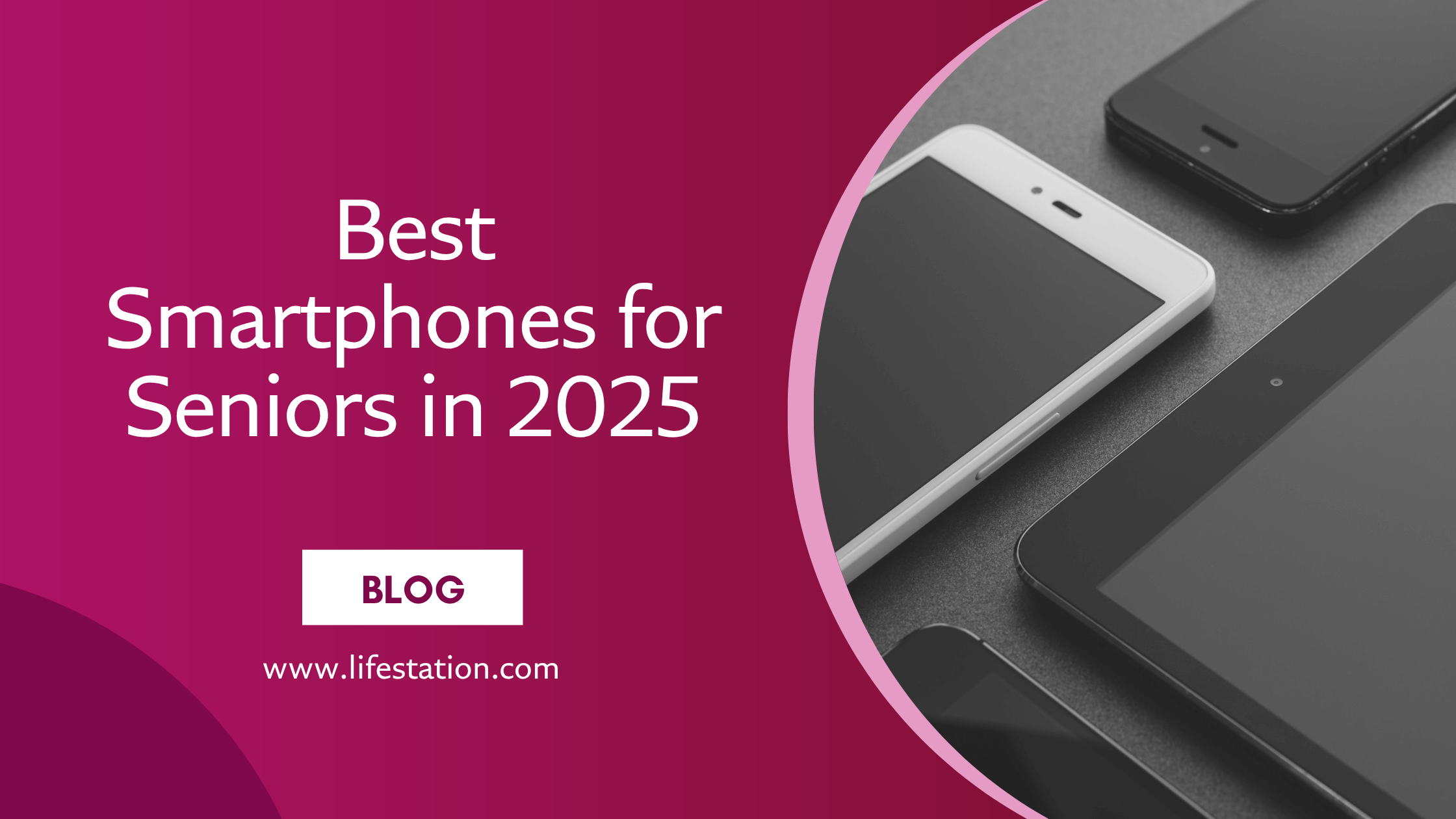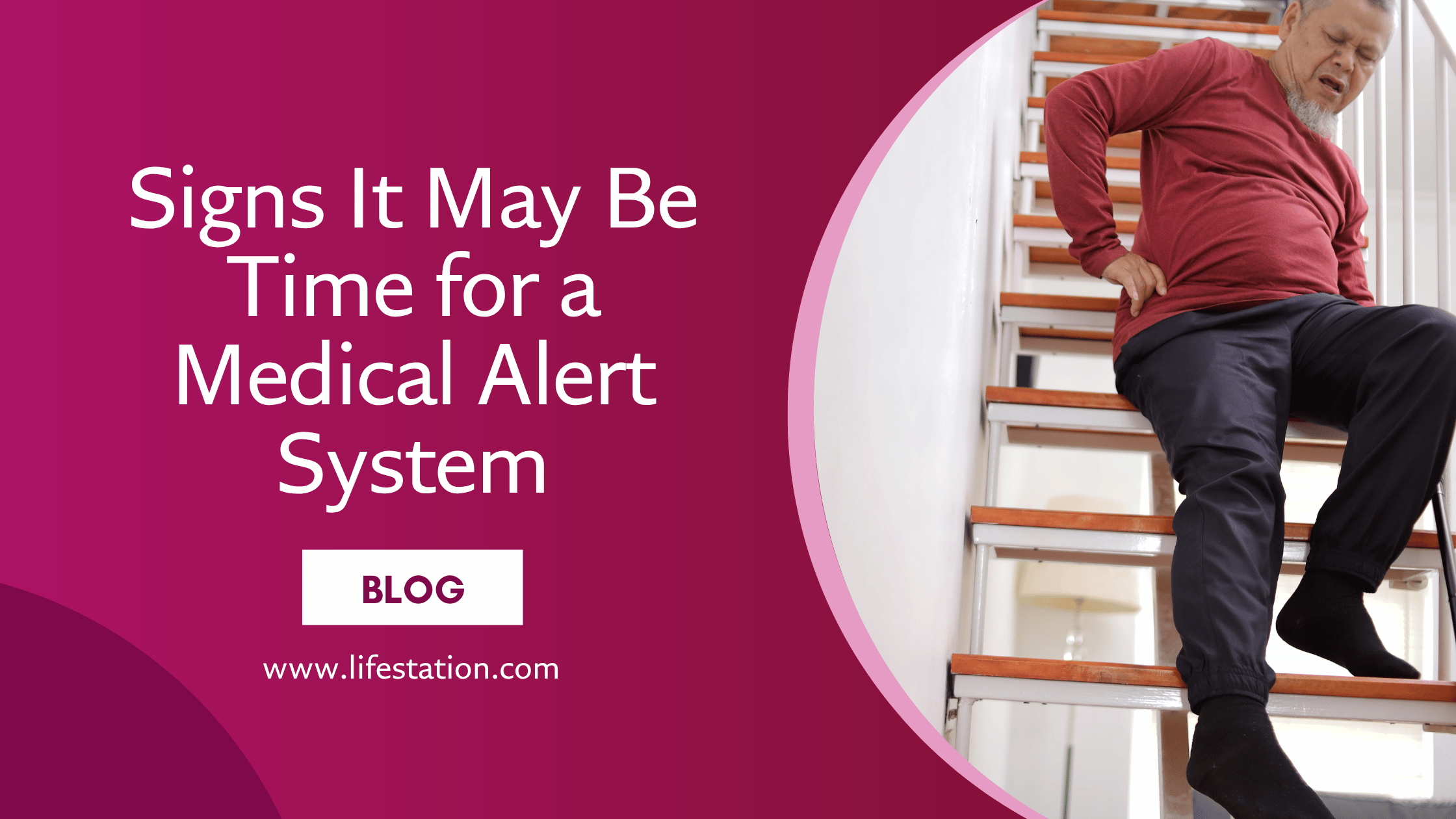Peace of Mind & Independence is One Call Away
(888) 493-1475 - Click to Call get a FREE MONTH of service.
Connection is a pillar of healthy aging — and staying engaged, informed, and supported while living alone starts with the right daily habits.
There’s no single solution for how to stay connected while living alone, but there are options — some simple, some that take a little more effort, all worth trying. After a period of solitude, getting back into a social rhythm can feel unfamiliar, but you don’t need to start from scratch.
For many older adults, a lack of regular contact can quietly shift into social isolation. And while that’s common, staying socially isolated for too long carries serious consequences — not just for mental health, but for physical outcomes too, including increased risk of heart disease and cognitive decline.
The good news is this: there are ways to change course. A walk with a neighbor. A phone call you schedule into your week. A shared lunch at a senior living community nearby. There’s no one-size-fits-all, but each step opens the door a little wider.
If you feel lonely, you’re not alone in that feeling — and you’re not stuck with it. We have real, actionable ideas to help break the pattern of senior loneliness and isolation, from small, everyday habits to more engaging community options when you’re ready to do more.
A LifeStation medical alert system gives you the freedom to reconnect, with support always within reach.
Practical Ways to Rebuild Social Connection
You don’t need a full schedule or a huge social circle to feel connected again. What matters is consistency, relevance, and choosing options that work with your lifestyle. These eight ideas are real, accessible, and adaptable — starting with the simplest and building from there.
- Make a weekly phone call to someone you already trust: Choose one or two family members or long-time friends and set a recurring call — same day, same time each week. Use a landline, mobile, or even speakerphone on a tablet to keep it easy. Routine calls help keep relationships warm and offer something to look forward to.
- Use video chat — and make it fun, not format: Free Apps like Zoom or FaceTime are simple and free. If you’re not sure how to set them up, most libraries or senior programs offer one-on-one help. Try scheduling a virtual lunch or even playing a simple online game together on Board Game Arena to keep it light and interactive. This kind of contact softens the emotional drag of social isolation and eases emotional pain.
- Drop by a neighborhood senior center with strong programming: Don’t waste time at centers that only offer passive events. Look for a local senior center that runs active programs — walking clubs, computer classes, intergenerational meetups, or creative arts. Use your town website or call the senior centers listed through your Area Agency on Aging to find options with actual energy.
- Pick up an old hobby — with people, not alone: Was it woodworking? Knitting? Gardening? You’re not the only one who misses it. Community colleges, libraries, and even YouTube groups have free or low-cost meetups and courses. Get into the social version of your old hobby — not just the solo version. Study Egyptian art or make your own art! The possibilities are endless.
- Check with your Area Agency for upcoming social events: These agencies often host monthly luncheons, educational lectures, or field trips — and they offer transportation if you need it. Don’t just wait for invitations — call them directly and ask for a calendar of social events or mailers.
- Find people with common interests through targeted platforms: Sites like Meetup.com, AARP’s online community, and local Facebook groups are full of groups for book lovers, walking clubs, classic movie nights, and everything in between. Filter by age and interest to cut through the noise and meet people who already share your rhythm.
- Join a walking or movement group tied to a community organization: Look for programs through your local YMCA, parks and recreation department, or hospital wellness programs. Many offer “Walk with a Doc,” yoga for older adults, or low-impact strength classes. These build both physical health and trust with a consistent group — and help lower the increased risk that comes with inactivity and disconnection.
- Volunteer where your presence actually matters: Skip generic volunteer work and look for opportunities where you can build lasting relationships — reading to children, mentoring job seekers, or supporting veterans. Try local libraries, public schools, or national programs like Senior Corps or AARP Experience Corps. These roles offer regular contact and genuine value to others, which boosts your own emotional well being and lowers your personal risk of prolonged isolation.
Being brave today means trying something new — even when it comes with a screen. LifeStation medical alert systems can be as simple or as tech-savvy as you want them to be, giving you the confidence to stay connected on your terms. Request a brochure!
The Role of Technology in Real-World Connection
Tech doesn’t always feel like a gift. For many older adults, it can seem like a cheap swap for the richness of in-person contact — more screen time, less eye contact. There’s truth in that. Convenience has overreached in plenty of ways. But in the context of social relationships and human connection, it can actually be the bridge back to what matters.
What you’re really getting isn’t more notifications — it’s more control. Using tools like scheduling apps, video chat, or reminders might not feel sentimental, but they create space for the parts of your life that are.
Managing how you combat loneliness without wearing yourself out is the key. Overcome loneliness without pretending to be busy all the time. When you use tech to keep your social life on track, you can put your real energy into where it belongs — shared meals, spontaneous conversations, the common interests that bring people together.
For those facing language barriers, mobility limitations, or the lingering effects of physical distancing, technology cuts through the friction. It helps you reconnect at your pace, without needing to jump through hoops.
Even health-wise, there’s value: people with stronger digital social ties tend to report lower stress and even reduced high blood pressure. These benefits go beyond convenience — they support your overall well being, both mentally and physically.
So check in with a grandchild or join a group at your local senior center; technology doesn’t have to replace the real thing — it helps make the real thing happen more often. And as people age, that consistency matters more, not less.
Connection Isn’t a Goal — It’s a Practice
Rebuilding a social life means developing rhythm. Just like you stretch to stay active, you also reach out to stay socially connected. There’s no finish line. There’s just effort, small improvements, and choosing to spend time where it counts.
The risk of developing dementia, depression, or even Alzheimer’s disease increases when isolation drags on. The national institute and national academies both highlight loneliness and social isolation as drivers of long-term decline. But here’s what they also agree on: connection helps. It’s not hype. It’s science.
That doesn’t mean you need a packed calendar or constant stimulation. It means noticing when you feel isolated, when your emotional health dips, and choosing to make a move — even a small one. That might look like joining a walking group, calling a loved one, or going to one of the social activities offered nearby. Every action adds up.
There’s no shame in starting again. Many older adults feel lonely, even those surrounded by others. But those who take steps — no matter how small — often see a difference in mood, memory, and their overall sense of connection.
A good medical alert system isn’t a backup plan — it’s a support system that frees you to participate in life. And with the right resources, the right support, and the right mindset, you can keep building the kind of connection that doesn’t just fill time — it fuels it.
Contact LifeStation today to find out more!
Freedom Comes From Feeling Ready
A LifeStation medical alert system isn’t about limitation — it’s about being ready for what comes next. Whether you’re reconnecting with new friends, exploring something new, or just wanting to prevent loneliness before it creeps back in, this is the perfect solution to move through your day with peace of mind.
Freedom isn’t doing everything alone — it’s knowing you don’t have to.
How can I stay socially connected if I have hearing loss?
Try video calls with captioning, amplified phones, or in-person events that use assistive listening devices (many libraries and senior centers offer these). Letting someone know your needs upfront also helps create smoother, more inclusive conversations.
What does a senior center offer beyond games and lunch?
Modern senior centers offer everything from educational courses and tech support to fitness classes and peer groups. Some even partner with universities or wellness organizations. These aren’t just for passing time — they’re real hubs for ongoing engagement.
Is loneliness always obvious, or can it sneak up on you?
It often builds gradually. You might not feel lonely at first — just tired, distracted, or unmotivated. That’s why it’s important to notice signs like skipping events, avoiding calls, or losing interest in things you used to enjoy. Small steps early on help prevent deeper disconnection.
Are there any national resources for older adults feeling isolated?
Yes. The National Institute on Aging, AARP, and local Area Agencies on Aging all provide support lines, program directories, and toolkits for staying engaged and safe. These aren’t just information hubs — they’re lifelines.
What’s the first step if I want to reconnect but feel unsure?
Start with what feels easiest — even if it’s just texting a loved one or reading through a community bulletin. Don’t wait for energy or confidence to show up first. Action often brings those things with it.
Get the Best in Medical Alert Services Now
Request Medical Alert Information
By clicking the Request Brochure button above, you are providing an electronic signature certifying that our company and our affiliates have your consent to contact you at the provided telephone number using an autodialer or prerecorded message in accordance with our Terms of Use. Please note that you are not required to purchase anything from the companies that may contact you. Healthcare providers and anyone interested in getting more information about working with LifeStation, please contact LifeStation business development. By entering an email address, you agree to receive emails periodically from LifeStation. You can unsubscribe from these emails at any time. LifeStation.com will never sell, trade, rent or give away your personal information without your permission. We value and respect your trust in us.

